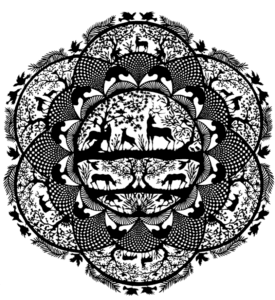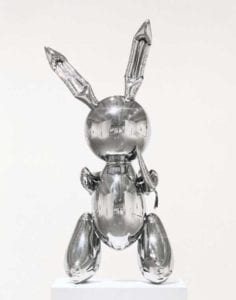Is It Art or Craft?

Cotxe Cobert, Yarn bombing, Plaça Nova, Alacant, Spain
This article was published in the August 2015 issue of Nashville Arts Magazine
by Rachael McCampbell
Before the Italian Renaissance, all forms of art were under one umbrella until the architects, painters, and sculptors were plucked from the artisan pool and made into superstars. This left the potters, glass blowers, tapestry weavers, goldsmiths, etcetera, in the arena of craft or decorative arts for centuries to come. Then, in the twentieth century, fine artists began to incorporate crafts into their work, and the once clearly defined boundary between the two worlds blurred beyond recognition. Now I ask, is there a difference between art and craft?
I think historically, the main difference between art and craft was the artist’s intention, what materials were used, and if the product was useable or wearable. Was the artist’s intention to express important personal ideas or feelings or to create an aesthetically pleasing object for a paying patron? As the middle class rose and art became more accessible to the masses, its purpose began to change. Utilitarian objects that had once been defined as decorative arts began to merge with fine arts.

One example is Yarnbombing, (or guerrilla knitting), which is basically crocheted or knitted yarn placed in unexpected public places. The material is still a craft item, (remember your Aunt Betty’s afghan throws?), but the usage has gone from usable art to an artist’s personal statement, therefore a fine art form. At first, the idea was about warming sterile public places, like knitting leg warmers for statues, then it morphed into a worldwide phenomenon of covering all sorts of things with yarn, from cars and bridges to trees and buildings, all to make greater, often sociopolitical statements—a softer form of street art, if you will.
Papercutting, which has been a craft art form for centuries beginning in China (think black, silhouetted landscapes and later Victorian profile pieces), is now a powerful fine art form. Tremendous wall sculptures and installations are constructed from reams of cut paper.

Beth White, Pappercutting
Context seems to be a big differential between the two as well. It’s not so much what an artist makes but where the art is put. For example, if you make a porcelain vase with shiny, gold glazes, it may be a well-crafted, decorative piece, but not fine art. Yet, if you take that same vase and suspend it from barbed wire over an open, taxidermied shark’s mouth and place it in a museum, it’s now fine art. The artist is using a crafted object to make a conceptual statement.

Jeff Koons’s famous stainless steel Rabbit comes to mind. He appropriated normal, blowup toys you might find in a dollar store and recontextualized them by casting them in shiny metals—an intriguing neo-pop art commentary on what constitutes fine art. But does this concept work in reverse, I wonder? Can you turn fine art into craft by switching its function? If you take a classical Greek sculpture of Hercules from the Getty museum, for example, and place it in your foyer at home to use as a hat rack, is it now a decorative piece, a craftwork, or fine art?

Perhaps it’s simply a nomenclature issue. If we just combine fine arts with crafts and rename it all Visual Arts, then there can be no exclusions or hurt feelings and everyone is happy.
To see the online version of this article in my column entitled And So It Goes… please go to Nashville Arts Magazine, August 2015 issue.
Leave comments here on my website. Thanks so much, Rachael

Thank you Rachael. I enjoy reading your monthly articles. Each article challenges me to open my mind … step out of my norm…. explore other possibilities. Please keep your thoughts flowing … And your art is amazing.